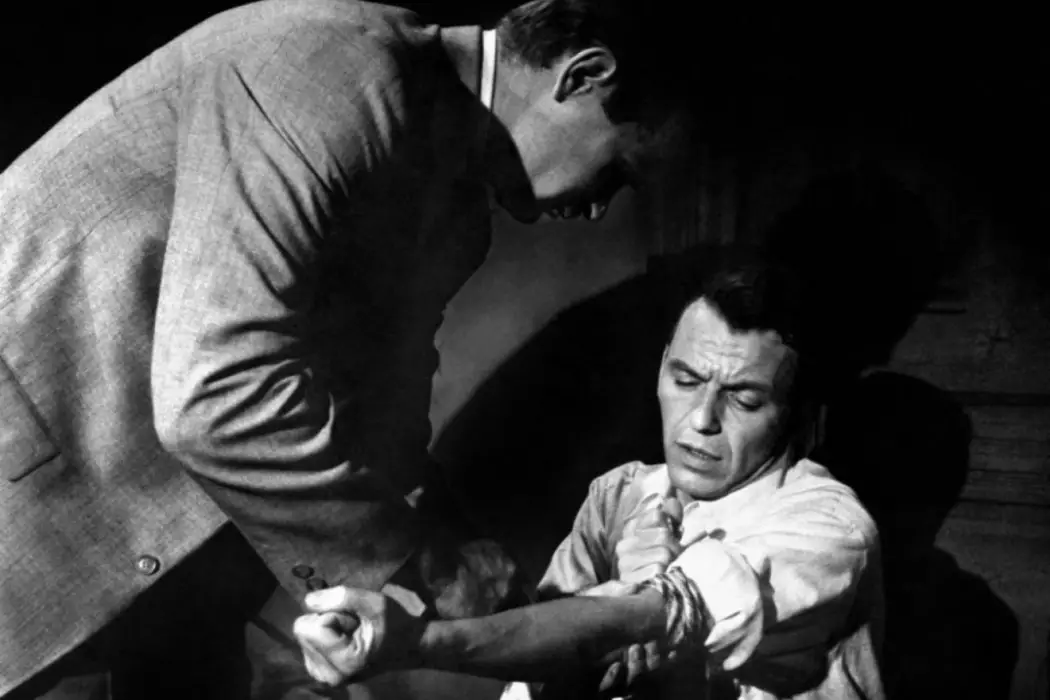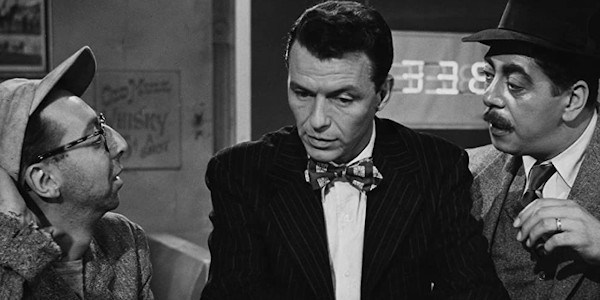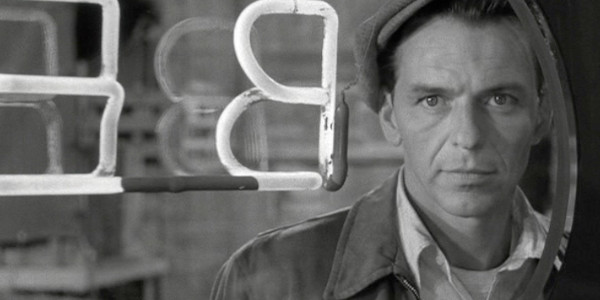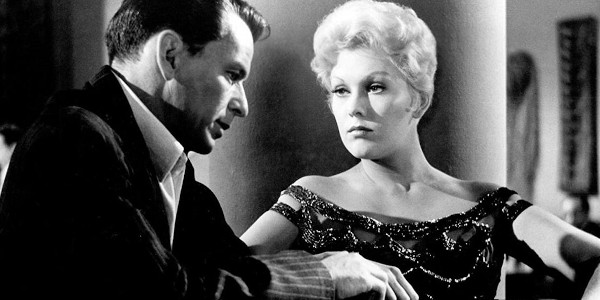THE MAN WITH THE GOLDEN ARM: Spades For Veins

Luke Parker is an award-winning film critic and columnist based…
Part of Frankie Machine’s (Frank Sinatra) problem is that consideration runs thin on his block. His initial determination and confidence – projected early on and in large part by Sinatra’s trademark, glossy glaze – stand no chance against the money-peddling corruption his name was once synonymous with. It’s only until he reaches the brink of death that he admits the mountain he’s trying to climb is impossible to do alone, a bellowing pit in this neighborhood.
Otto Preminger’s taboo classic, The Man with the Golden Arm, was born out of defiance. Legend has it that Preminger was unimpressed with the idea of adapting Nelson Algren’s novel until he saw Frankie’s mountain – the up-and-pitfall battle of overcoming drug addiction – as another opportunity to wage war on the Production Code. The result was a largely disputed (V.F. Perkins called the Oscar-nominated production a “well-made film on a forbidden subject”), controversial (it moved forward without the PCA seal of approval), and albeit appealing story.

This offscreen tug-of-war still seeps from the edges of the reel today. While the film makes considerable, almost criminal alterations to Algren’s foundation, settling for the more pleasing, simplistic and surprisingly less ruthful finale, The Man with the Golden Arm still depicts drug abuse as an alarmingly uphill battle.
No Way Out
When Frankie steps off the bus, bags in hand, he looks as if he has just come back from a much-needed vacation. While the well-rested sentiment is true, it doesn’t take long to discover that he is actually returning home from a jail sentence, during which he kicked his “monkey” and found a new path: music (an almost ironic characteristic given Sinatra’s own musical background and his desire to separate his singing and acting careers with this film).
Encouraged by his doctors and fellow prisoners to continue on with his drumming – he’s described as “a natural” and gifted a basic kit for his homecoming – Frankie’s newfound passion is instantly pounced on by those around him. Once the card dealer to one of the slum block’s more vocal hustlers (Robert Strauss), every discordant force, be it the police, his former boss, or his pusher (a sly, cold Darren McGavin), swarm. Even his possessive wife, Zosh (Elanor Parker), crippled by Frankie’s past irresponsibility, dismisses his art.

These nauseating serpents, combined with his body’s misleading desires, are a lethal combination. For those who have experience with the heroin prison story – there are many more in a mainstream audience now than there were during its 1955 release – know that behind Sinatra’s optimistic smile is an incredibly delicate system, one that is just as liable to break as it is to flourish. Preminger’s tight knit arena – a congested RKO backlot with the bulk of the plot branching off its main street – hurls this balance with the subtlety of a lion’s den. His claustrophobic world-binding is no less a declaration of war (Algren was apparently turned off by the director’s elitist attitudes from the moment they met) as it is an effective manipulation of space.
Finding the Needle in the Haystack
Needless to say, in this environment, Frankie’s prospects quickly sour. Unable to surpass his body’s beckoning calls, his initial hesitations and resistance are violently flushed and soon, he is no better off than he was before he left. With only two lifelines disappointed by this development – his ex-mistress Molly (Kim Novak) and fellow hustler compadre Sparrow (Arnold Stang) – his story is as symbiotic to the slum as it is to the narcotic.
That being said, The Man with the Golden Arm is very much a character piece. Dependent almost to a fault on people in comparison to the Algren novel – in which the city took a more active, if metaphorical role – the performances here are more important than anything. While Novak and McGavin bring authenticity to the two ends of Frankie’s struggles, Parker’s nonstop demands and deceptions are beyond annoying, and Stang’s wise-cracking sidekick is far less developed than the other main players.
Sinatra, however, fades beautifully into the role, which earned him his second Oscar nomination and, not to mention, a spot over rival leading man Marlon Brando. Where Walter Newman and Lewis Meltzer’s script falters in description (the rather simplistic explanations behind the heroin addiction feel both cliché and surface-level), Sinatra fills the holes with a wildly active, animalistic turn. The “monkey,” as Frankie puts it, becomes the man towards the end of the film, and its resurrection is its most convincing, and lasting exhibit.

Of course, his performance was not all that shocked the PCA and the world. During Frankie’s sessions, usually preceded by morphing bouts of dread, decimation, and begging, Preminger leaves little to the imagination. Spoons, needles, and bands are all seen and implemented regularly, with Elmer Bernstein’s rising jazz score and an eye-level examination completing the picture.
Conclusion: The Man with the Golden Arm
Though tame by comparison to the vein-ripping dramas since populated by Aronofsky, Boyle, and Van Sant, The Man with the Golden Arm’s outlawed aesthetic and spirit make it a tangible and lasting achievement.
Have you had the chance to see this taboo classic? If so, let us know how you liked it in the comment section below!
The Man with the Golden Arm is currently available on MUBI US.
Watch The Man with the Golden Arm
Does content like this matter to you?
Become a Member and support film journalism. Unlock access to all of Film Inquiry`s great articles. Join a community of like-minded readers who are passionate about cinema - get access to our private members Network, give back to independent filmmakers, and more.
Luke Parker is an award-winning film critic and columnist based in the Baltimore-Washington metropolitan area. As an entertainment journalist, he has interviewed several members of the film industry and participated in some of its most prestigious events as a member of the press. Currently, he is working to obtain his bachelor’s degree in Mass Communication at Towson University.













